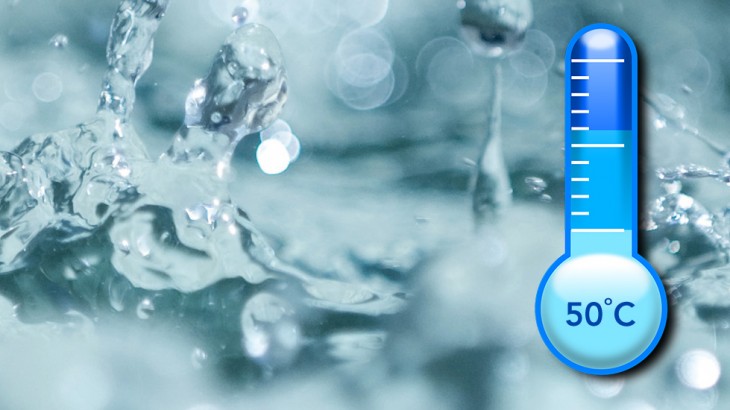If you lower the temperature in the laundry you can reduce costs by tens of thousands of kronor per year.
Industrial washing of machined products is often carried out in dip- or ultrasonic washers where the item is lowered down into heated tanks with a water/detergent mixture. These heated tanks have been shown to be very costly. In a new study, Master Chemical reports that reducing the washing temperature from 70°C to 50°C in a 2,200 litre dip washer can reduce the costs by about 38,000 kronor per year.*
Hot washes - an energy guzzler
Heat has an a important function with traditional detergents as it lowers the viscosity of the contaminants, increases the chemical activity and means that the surfactants in the detergent do not foam. The temperature also functions as a defence against bacteria. Typical recommendations for dip washers are 60°C to 80°C and the most common temperature range is 65°C to 75°C.
Today many companies are engaged in reducing their energy usage in order to cut costs and reduce CO2 emissions. Using hot washes with heated tanks runs directly contrary to this aim. Hot washes are real energy guzzlers, the heat is constantly being lost through:
- The components being washed absorbing heat, which subsequently disappears out of the system. The larger the components the greater the losses.
- Thermal radiation from all the washer's surfaces.
- Loss of energy and water through evaporation.
- This also contributes to increased salinity in the washer, which in turn causes quality problems if the washing or rinsing water is not changed.
- If de-ionized water is used, the temperature contributes to increased consumption.
What is required to lower the temperature?
There are four key parameters that affect the final washing result:
- Temperature
- Time
- Chemistry
- Mechanical energy
To be able to change the temperature in a washer other parameters should be taken into account, for example, another type of washing chemistry is needed. In addition, a good level of filtration and water quality is essential for satisfactory washing results. The components never become cleaner than the dirtiest rinsing bath.
A temperature reduction increases bacterial growth. Today there are excellent alternatives to high temperatures and chemicals for reducing bacteria in industrial washers, they are also more cost-effective.
To sum up
A lower temperature in the washer leads to reduced energy consumption, reduced water consumption, an extended life cycle for the washer (less downtime) as well as better washing results. Dimensional accuracy is maintained even in cases where the washer is used in a step before precision machining.
Important to bear in mind: Review the detergent chemistry and safeguard yourself against the risk of bacterial problems in the bath that arise below 60°C.
If you have questions about lowering the temperature, don't hesitate to contact us!
*Based on electricity costs of 1 SEK/kWh and weekly operations with a stop at weekends (132 h/v).
(JÖ)


Comment